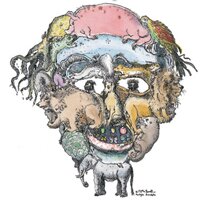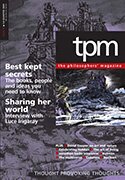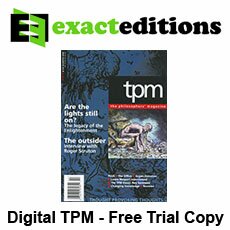Paul Snowdon continues our top 50 ideas of the century series

tpm cover art by Felix Bennett
This idea in its current rebirth started before the launch of The Philosophers’ Magazine, gaining prominence in the last decade of the last century when it dawned on a number of people – including David Wiggins, Michael Ayers, Peter van Inwagen, Eric Olson, and me – that the then standard accounts of personal identity had an apparently paradoxical consequence. Standard accounts, such as those associated with Derek Parfit and Sydney Shoemaker, characterised persons in psychological terms which clearly meant they had to be distinguished from the animal which is present where they are. But since the animal itself also has psychological properties – it can see, act, speak and think, and so on – it seems to follow that there are two psychological subjects, indeed perhaps, two person-like things at the same place. This problem became known as the “two lives” problem.
Some also thought that there was another difficulty in the standard views, namely that they seem committed to what is sometimes called “coincidence”. Coincidence stands for the idea that there can be at exactly the same place and time two non-identical objects. In the case of such views the two coincident things are the person and the animal, but other candidate examples of such coincidence that people have endorsed are the statue present exactly where the lump of clay out of which it is made is also present. Philosophers had for some time been quite happy with this idea, but it began to strike some as questionable. If that is questionable, then since there is an animal where the person is, must not they be the same? So, identifying the person and the animal seemed to avoid two major problems. Hence the emergence of animalism.
The proposal inspired investigations along two main dimensions. The first was that the traditional distinction between person and animal was sustained by arguments that seemed to indicate they cannot be identified with each other, and animalists needed to provide answers to them. Roughly, these arguments claimed that we can imagine possible circumstances in which the person and the animal count as coming apart, and so cannot be the same thing. Possible examples are where the person loses all mental functions but the animal remains alive, about which some say that there is no longer the person even though there is the animal. Another possible case – of considerable importance – is that of brain transplants, where it is felt by many the person goes with the brain but the animal is left behind. Animalists tried to provide responses to these types of argument.
A second direction of argument was that of unearthing other difficulties and problems with the established orthodoxy. For example, if we think that we begin our existence well before birth, we must acknowledge periods of our existence where its continuity cannot be analysed in terms of psychological links, there not being any at that stage.
More recently, two major developments in relation to animalism stand out. First, there has been what one might call an orthodox backlash. Philosophers such as Sydney Shoemaker, Lyn Baker, and Mark Johnston have exhibited amazing ingenuity and tried to answer the major alleged problems supposedly present in traditional theorising, and to reinforce the traditional problems facing the animalist identity. Second, there has been an attempt to link the debate about animalism with more general problems in metaphysics to do with identity and persistence (for example, debates about coincidence in general). Unfortunately the suspicion is that it is harder to discern the truth about general metaphysics than it is about ourselves. But a good account of this can be found in Olson’s second and more recent book, cited below.
What next? All I can say is – watch this space. I expect that there will be continued attempts to articulate the appeal of animalism. It has too much of the ring of truth to allow a return to the fantastical and more or less ungrounded speculations about our nature that philosophers seem so attracted to.
Further reading
What are We? A Study in Personal Ontology, Eric Olson (OUP 2007)
Paul Snowdon is Grote Professor of Mind and Logic at University College London
Read new articles as they’re published, plus much more, by subscribing to tpm
 Email This Post
Email This Post 



Discussion
No comments for “Ideas of the century: Animalism (44/50)”